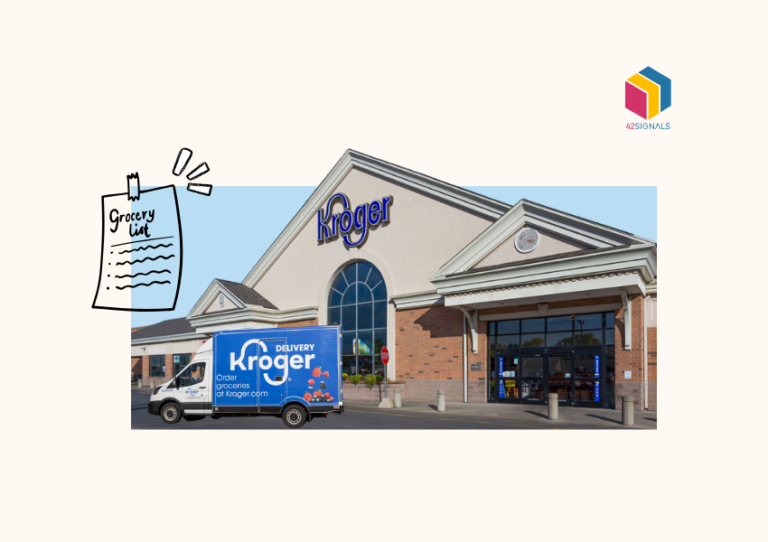What’s the importance of a MAP violation tool? In a competitive e-commerce market, manufacturers and retailers need to ensure fair competition and maintain profit margins; maintaining control over your product’s pricing can be a daunting task.
For instance, picture an online fashion brand that meticulously designs a line of high-quality dresses. They dedicate considerable resources, including time, money, and creativity to craft these dresses, establishing a Minimum Advertised Price (MAP) that mirrors the true worth of their products. But, in the digital marketplace, the challenge of ensuring strict adherence to this pricing policy can be overwhelming.
This is where a MAP (Minimum Advertised Price) violation tool comes into play. Businesses can enhance efficiency, reduce costs, and protect their brand reputation by effectively monitoring and managing MAP violations.
What are MAP Violations?
Before diving into the benefits, it’s essential to have a clear understanding of what MAP violations are.

Image Source: Minderest
MAP Policies
MAP policies are contractual arrangements established between manufacturers and retailers, dictating the lowest permissible price at which a product can be advertised. These policies serve the dual purpose of fostering fair competition and safeguarding against price erosion.
Why are MAP policies essential for manufacturers and retailers?
MAP policies play a crucial role in safeguarding your brand’s reputation and ensuring fairness among retailers. They work to create an environment where everyone in the distribution chain, from wholesalers to retailers, can pursue profits without engaging in price wars that harm the brand or their businesses.

Image Source: Metrics Cart
MAP Violations
A price violation occurs when a retailer advertises a product below the agreed minimum price. These violations can harm both manufacturers and other retailers who abide by the MAP policies. Price erosion can lead to decreased profit margins, devalued products, and an overall negative impact on brand image.
Challenges of Monitoring MAP Violations Manually
Manual monitoring of MAP violations is not only time-consuming but also prone to errors. Tracking prices across multiple online platforms and keeping up with constant price changes is an overwhelming task. Retailers who breach MAP policies can easily slip through the cracks.
If you don’t actively enforce your MAP policies, it can lead to a reduction in profit margins, brand erosion, and strained relationships with other retailers. It can even drive you to the brink of price wars, which no one truly wins.
MAP Violation Tools
To effectively manage and monitor violations, businesses can utilize specialized software or tools designed specifically for this purpose. These tools can scan a wide array of websites, from e-commerce giants to niche marketplaces, to ensure your products are priced according to your policies.
They offer a range of features to track and identify instances of non-compliance.
Key features and functionalities that MAP violation tools offer:
- Real-time price tracking.
- Automated violation alerts.
- Detailed violation reports.
- Integration with e-commerce platforms.
- Customizations to fit your needs.
Benefits of Using a MAP Violation Tool
Implementing a price violation tool can bring numerous benefits to businesses. Here are some ways that these tools can help maximize efficiency and cost savings:
1. Efficient Monitoring
Monitoring multiple platforms and websites manually can be time-consuming and prone to human error. With a violation tool, businesses can automate this process, saving time and resources. These tools continuously monitor the market, ensuring that any instances of non-compliance are detected promptly.
2. Timely Intervention and Enforcement
By promptly identifying MAP violations, businesses can take immediate action to rectify the situation. A tool enables automated notifications to be sent to violators, reminding them to adhere to the agreed pricing. This timely intervention helps maintain fair competition and prevents further price erosion.
3. Improved Brand Reputation
Consistently enforcing MAP policies helps protect a brand’s reputation and value. By actively monitoring and addressing violations, businesses can ensure that all retailers adhere to the pricing standards. This leads to a level playing field and enhances the overall perception of the brand in the market.
4. Enhanced Sales and Profit Margins
Reducing instances of price undercutting through effective management can have a direct impact on sales and profit margins. When all retailers adhere to the minimum advertised price, it eliminates the need for price wars and encourages healthy competition. This, in turn, helps businesses maintain their profitability while offering value to customers.
5. Actionable Insights for Decision-Making
Price violation tools not only detect violations but also provide valuable data and analytics. These insights help businesses understand trends and patterns related to MAP offenses, enabling them to make informed decisions. By identifying key market dynamics, businesses can optimize pricing strategies and take proactive measures to prevent violations in the future.
Conclusion
A price violation tool is indispensable for modern businesses operating in the online marketplace. They not only protect your brand’s image and profitability but also free up valuable time and resources.
So, if you want to ensure that your products are advertised at the right prices and gain an edge in the competitive e-commerce world, investing in a MAP violation tool is a wise choice. Say goodbye to manual monitoring and hello to efficient, automated price control! Seeking a cost-effective solution to tackle rampant violations?
Schedule a demo with 42Signals today.
Frequently Asked Questions
What is MAP monitoring software?
MAP (Minimum Advertised Price) monitoring software is a tool used by manufacturers and brands to monitor the advertising practices of their authorized dealers, distributors, and retailers. The software helps ensure that these partners are adhering to agreed-upon minimum advertised prices (MAP) for their products. This allows brands to maintain control over their pricing strategy, protect their brand image, and avoid price wars that can harm profit margins.
What is MAP compliant?
MAP compliance refers to the extent to which a partner’s advertising practices align with the MAP policies set forth by the manufacturer or brand. Compliance means that the partner is not advertising the product below the minimum price established by the brand. Non-compliance, on the other hand, can result in consequences such as loss of authorization or legal action. It’s important for brands to regularly monitor their partners’ advertising activities to ensure they remain MAP compliant.







